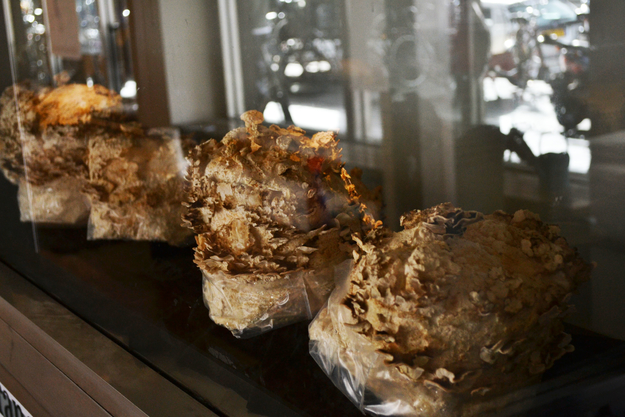About
The turkey tail recycles nutrients and minerals, and releases them back into nature slowly over time. It is one of the most common fungi to be found in the woods, and does well in all seasons. Although apparently harmless and innocent (the Dutch name translates as "Fairy Bench"), the turkey tail is actually an incredibly strong medicine. In combination with chemotherapy it has increased survival rates of numerous types of cancer. This mushroom also has bioremediation potential, according to mycologist Paul Stamets.
Growing process
Stage 1
A substrate mixture of wood and nutrients has been inoculated with Trametes versicolor mushroom spores. The spores multiply and spread through the substrate, causing the block to turn white.
Stage 2
At this stage, called “primordia formation”, the root structure of the mushrooms, the mycelium, has now spread throughout the substrate, causing the entire block to harden and turn white.
Stage 3
The final stage is ‘fruitbody development’. Once fruitbodies are seen, the plastic casing is removed from the substrate block. The mushroom then begins to grow out in a colourful tail-like pattern. This mushroom is inedible and serves more of a decorative purpose.



